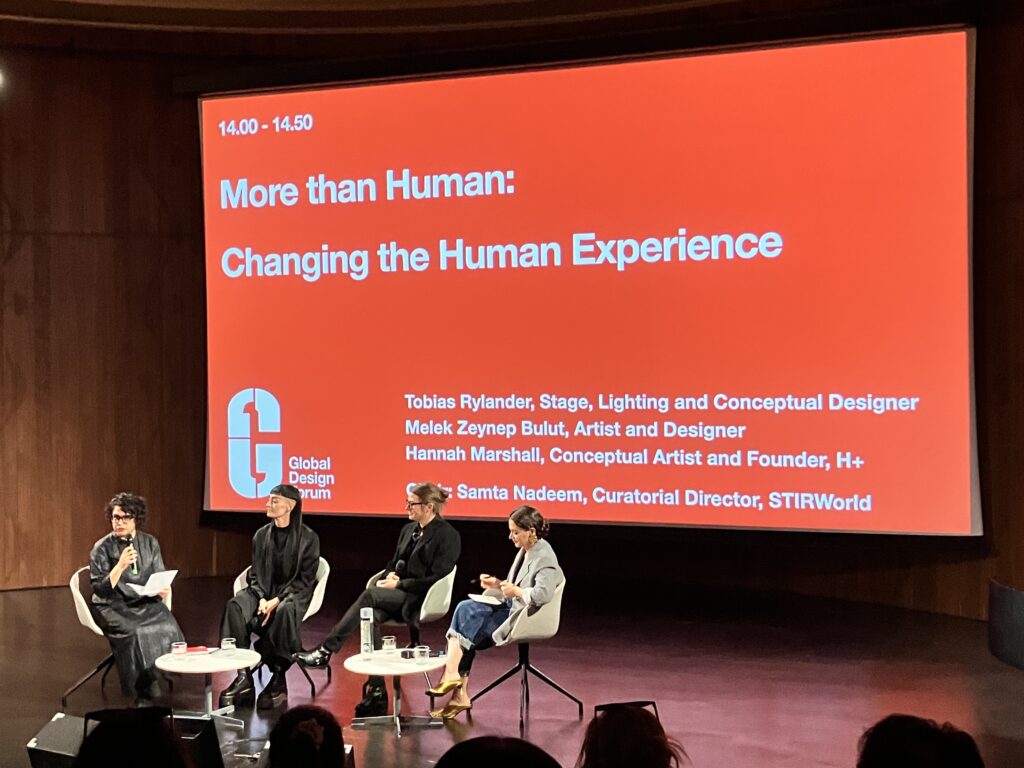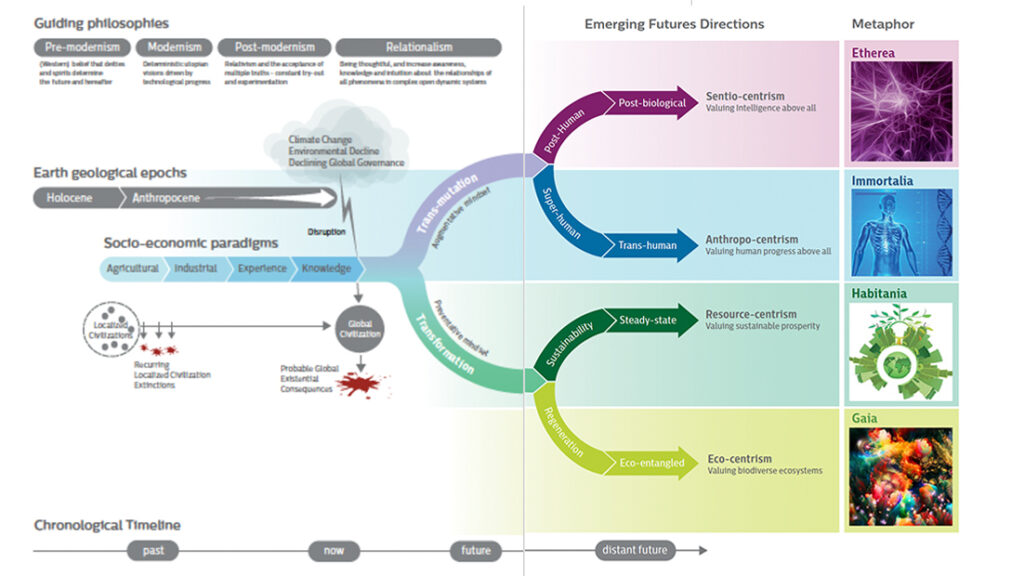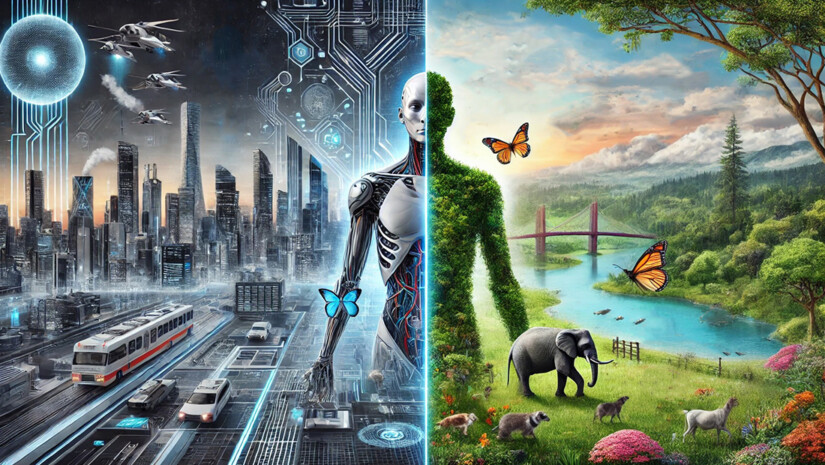A few weeks back, I visited the V&A museum for a series of Global Design Forum discussions themed ‘More than Human’. This event was part of the London Design Festival and was assembled by several V&A curators. I listened in for a full day of four-panel discussions, which included the following sub-themes:
- Playtime
- Changing the human experience
- Design for connection
- Harnessing the power of Pluralism
A confusing title
I was intrigued by the theme title, ‘More than Human’ because it resonates with our research focus. I was curious how the four sub-themes would extend from the human experience into the realm of the ‘more than human’ dimension.
However, after the first two panel discussions, I found myself confused. I had hoped to hear design professionals discuss processes or outputs that involve or impact entities beyond the human race-such animals/insects/plant species. Instead, the discussions primarily centred around human experience, exploring the senses and the artificial world that designers create for their audiences. There was an emphasis on designers being the creators of man-made spaces, and how the audience is invited to experience their divine creations. It felt very different from my expectations of what ‘more than human’ should encompass if not entirely the opposite.

I turned to the lady sitting next to me and was relieved to discover that she shared my confusion; she had also anticipated a discussion more relevant to sustainability with this theme.
Posthumanism concepts
My confusion was clarified when one of the moderators in the third discussion mentioned the post-humanism approach to design, prompting a specific question from the audience about this topic.
At that moment, I understood the source of confusion shared by my fellow attendees. There seemed to be a mix-up between the terms ‘more than human’ and ‘post-human’, leading to confusion about the concept they each represent.
‘Post-human’ refers to future human evolution that focuses on its relationship and integration with technology, often referencing synthetic man-made mechanics that are considered distinct from ‘natural’ biological humans. In contrast, ‘more-than-human’ refers to the deep connection between human and non-human entities like animals, plants, natural ecosystems, and sometimes technology. The two concepts clearly have very different philosophical roots and manifest themselves in different directions, although some overlap can occur.
Multiple futures
At Stby, we are not focused on arguing whether our future should be post-human or more-than-human. Instead, we take inspiration from a helpful framework to guide our thinking: co-emerging futures. This concept is outlined in a 2019 publication by Reon Brand, who suggests that four distinct co-emerging futures can co-exist and resonate with various groups of people, each with different belief systems and worldviews. These groups may process and interpret the same event in very different ways. Brand identifies these four futures as ‘post-human’, ‘super-human’, ‘sustainability,’ and ‘regeneration’.

With this framework in place, let’s compare post-human to more-than-human. Post-human is driven by the belief that intelligence is valued above other beings, while more-than-human values biodiversity in the ecosystem more. These are driven by very different worldviews, and they can lead to very different trajectories for the future. Despite this, these futures can co-exist. Since these futures are shaped by our individual differences and worldviews, having our reference right in this debate is even more critical. To have a proper conversation about our futures and the design practice within these futures, we need to be clear about the terminology we use.
Why terminology matters?
I wonder if the curators fully considered the implications of the term “more than human” when developing the program and marketing it on their website and in the brochures. If there is an intention to broaden the conversation to encompass the coexistence of post-human and more-than-human futures, a more explicit explanation is needed. Alternatively, there may be an assumption that these two terms are interchangeable. In either case, the conflation of “more than human” with “post-human” has led to confusion, potentially causing designers unfamiliar with these concepts to believe they are synonymous mistakenly.
At Stby, we work with designers from many walks of life. We are also constantly pushing the boundaries of what we, designers, can and should view and practice our crafts. As suggested in Brand’s framework, we designers can benefit greatly from imagining our practice in many co-emerging futures.
we designers can benefit greatly from imagining our practice in many co-emerging futures
It would be great for all designers to explore a future that may not come intuitively. Our training and practice often make us comfortable with focusing on the man-made world as the centre of our designs. However, there is great value in stepping away from the narcissistic and human-centric perspective and considering a broader view that extends beyond our human experiences and human creations. By intentionally using the term ‘more-than-human’, we can encourage ourselves and our peers to shift, recognising the importance of the natural ecosystem and its many non-human stakeholders in our design decisions and processes. Embracing an eco-centric (Gaia) viewpoint requires effort, and using the right terminology to point out this view shift explicitly is a crucial first step in acknowledging the changes taking place in our practices.
Qin Han
